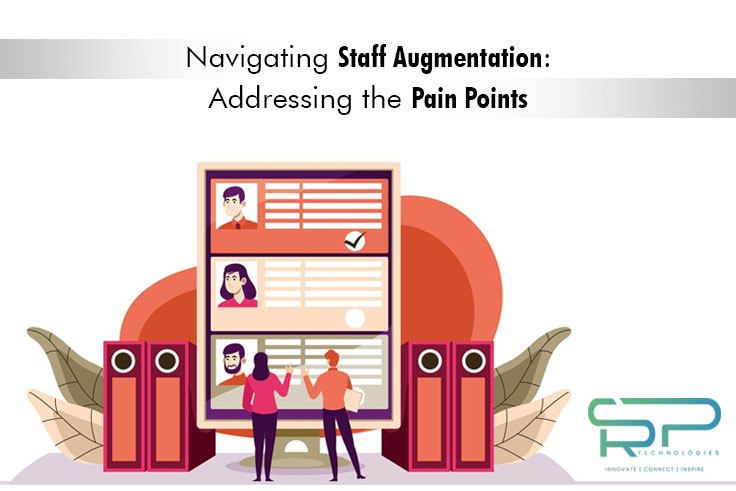
In today’s rapidly evolving business landscape, organizations increasingly turn to staff augmentation as a strategic solution to meet their fluctuating talent needs. Staff augmentation offers flexibility, scalability, and access to specialized skills, making it an attractive option for companies of all sizes and industries. However, despite its numerous benefits, navigating the terrain of staff augmentation can present challenges and pain points.
Understanding Staff Augmentation
Staff augmentation is a workforce strategy that involves supplementing an organization’s existing team with external talent on a temporary basis. This external talent can include contractors, freelancers, or specialized agencies hired to fill specific roles or complete projects. Unlike traditional hiring models, staff augmentation offers businesses the flexibility to scale their workforce up or down based on project requirements, without the long-term commitment of hiring full-time employees.
While staff augmentation can provide significant advantages, such as cost savings and access to niche expertise, it also poses several challenges that organizations must address to ensure success.
Identifying Common Pain Points
Cultural Misalignment: One of the primary challenges in staff augmentation is integrating external talent with the existing team culture. Differences in work styles, communication norms, and organizational values can lead to cultural misalignment, resulting in misunderstandings, conflict, and decreased productivity.
To address cultural misalignment, organizations should focus on fostering a sense of belonging and collaboration among all team members. This can include implementing clear communication channels, organizing team-building activities, and providing cultural sensitivity training to promote mutual understanding and respect.
Communication Challenges: Effective communication is essential for successful collaboration, especially in a distributed workforce environment where team members may be located in different geographic regions or time zones. Communication challenges, such as language barriers, technological limitations, and conflicting schedules, can hinder productivity and project progress.
To overcome communication challenges, organizations should invest in robust communication tools and platforms that facilitate real-time collaboration and information sharing. Setting clear expectations, establishing regular sync-ups and status meetings, and providing ongoing feedback can also help mitigate communication barriers and ensure alignment across the augmented and in-house teams.
Quality Control: Maintaining consistency and quality of work from augmented staff members can be a significant concern for organizations, particularly when there’s a lack of direct supervision or oversight. Without clear guidelines and performance expectations, there’s a risk of deliverable discrepancies, missed deadlines, and client dissatisfaction.
Organizations should establish clear project guidelines, benchmarks, and quality assurance processes to address quality control issues to ensure that deliverables meet the required standards. Implementing regular performance evaluations and feedback sessions, assigning mentors or supervisors for augmented staff, and providing ongoing training and development opportunities can also help maintain high levels of quality and consistency across the workforce.
Frequently Asked Questions – Staff Augmentation (FAQs)
How can I ensure confidentiality and data security when working with augmented staff?
Implement robust security protocols and non-disclosure agreements (NDAs) to safeguard sensitive information.
Conduct thorough background checks and vetting processes for augmented staff members to ensure trustworthiness and integrity.
What steps can be taken to mitigate the risk of staff turnover among augmented employees?
Offer competitive compensation and benefits packages to attract and retain top talent.
Provide opportunities for professional development and career advancement within the organization to foster loyalty and commitment.
How do I measure the ROI of staff augmentation initiatives?
Track key performance indicators (KPIs) such as project completion time, cost savings, and client satisfaction ratings to evaluate the effectiveness of staff augmentation strategies.
Conduct regular assessments and audits to quantify the tangible benefits and ROI of staff augmentation investments.
Conclusion
While staff augmentation offers numerous benefits for businesses, it’s essential to recognize and address the associated pain points proactively. By implementing strategies to overcome challenges such as cultural misalignment, communication barriers, and quality control issues, organizations can maximize the value of their augmented workforce and achieve greater success in their projects. With careful planning, effective communication, and ongoing support, staff augmentation can be a powerful tool for driving innovation, scalability, and competitiveness in today’s dynamic business environment.
